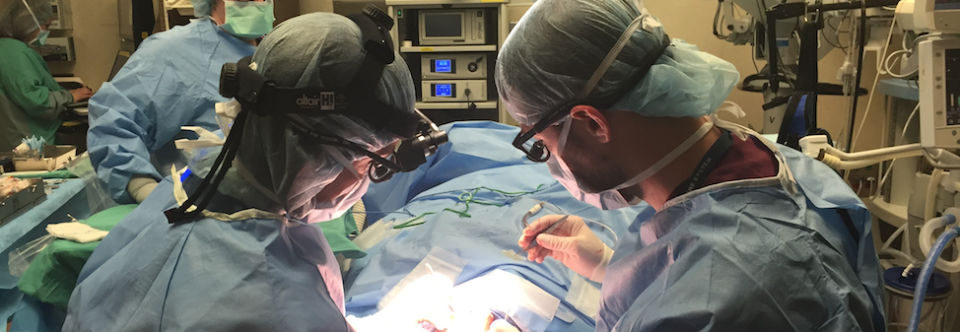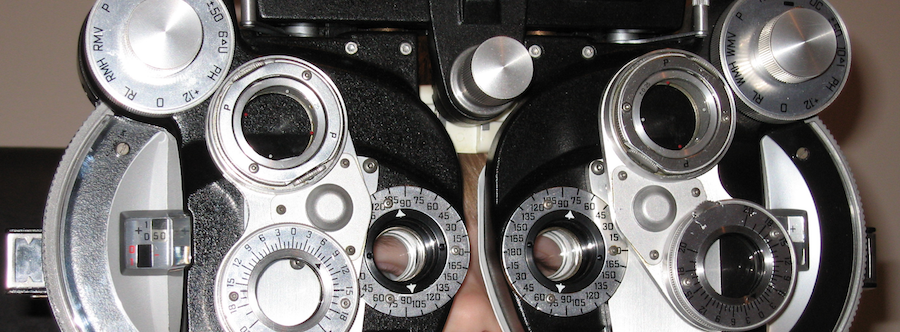"Representing Iowa Ophthalmologists and their patients"
Advancing the lifelong learning and professional interests of ophthalmologists
Ophthalmologists best trained for risky eye care situations
What’s the difference between a routine eye injection and an emergency? When it comes to surgical procedures involving the eye, sometimes it’s no more than a millimeter. That’s what makes training and real-world experience vital for the safe care of your vision.
Opticians, ophthalmic technicians, nurses and optometrists all contribute valuable professional skills to an eye care team. The highest level of care comes from ophthalmologists.
Ophthalmologists spend four years in medical school followed by at least four years in residency programs obtaining hands-on training and experience in the medical and surgical care of the eye. Ophthalmologists must also undergo rigorous board certification exams and maintain this certification through required continuing education hours and repeated testing throughout their careers.
When I say the difference between routine and emergency is no more than one millimeter, that is no exaggeration. Serious complications are possible, even in the best of surgical hands. Accidental penetration of the eyeball with a needle can lead to a retinal detachment or bleeding in the eye. Bleeding behind the eye from an injection around the eye or eyelids can cause blindness if the pressure is not relieved by an emergency surgical procedure.
As a resident at the University of Iowa, I learned these procedures, including how to handle emergencies, on live patients under the supervision of well-trained faculty who are experts in their field. Ophthalmology residents see a minimum of 3,000 patient visits during their training, many of whom have significant pathology of the eye. We can all take pride in Iowa’s ophthalmology residency program which is consistently ranked as a top five program in the country.
We should also take pride in the decision by our state Legislature not to back down from well-established standards for care. A proposal had been floated at the statehouse to permit optometrists to perform high-risk injections on seemingly small lesions in eyelids that could lead to permanent blindness. Fortunately, thanks to our legislators, that proposal was halted at the committee level.
Some may argue that rural Iowans lack access to ophthalmologists, but virtually everyone in Iowa lives within a 30-minute drive of an ophthalmologist. Many ophthalmologists travel to rural communities to perform surgery. I am from a small town myself. I firmly believe that we should take no exception in ensuring that the standards of care are kept high for everyone, regardless of where they live.
Small injections around the eye may seem simple, but the decision of when to inject is not, and the procedures require appropriate clinical and surgical expertise, especially if a complication or emergency arises. Iowans in every corner of the state deserve the best care from a full team of eye care professionals, each specialized to perform what they know and practice best.
About IAO
Welcome to the Iowa Academy of Ophthalmology
The Iowa Academy of Ophthalmology (IAO) is a statewide organization representing Iowa Ophthalmologists and their patients. We are an affiliate of the American Academy of Ophthalmology. The IAO was founded in 1961 as the Iowa Academy of Ophthalmology and Otolaryngology. In 1989, the IAO incorporated as the Iowa Academy of Ophthalmology. Our current membership includes 85% of Ophthalmologists in Iowa.
The IAO is committed to serving our 150 plus Iowa eye doctors by monitoring state legislation and regulations that pertain to ophthalmic medicine, advocacy on public policy matters, continuing education, and public information regarding eye disease and treatment. We hope you enjoy this informational web-site and encourage you to return often for updates. We also welcome your comments and questions at iaoexecdir@gmail.com






